Aggression in cats is a major problem that can result in injury to humans and pets. Although feline aggression towards humans isn’t frequently reported as dog attacks, it’s a significant challenge for cat owners, a public health concern, and an issue that, unfortunately, often leads to relinquishment.
Let’s reshape our thoughts on aggression and decode what motivates cats as species to behave ‘aggressively’ towards humans, each other, and other pets. In addition to learning about why cats may seem aggressive, we’ll discuss methods to tackle that animosity for a more harmonious home.
Quick Overview: Aggression In Cats
What Is Aggression in Cats?
Aggression is described as a warning or attack that’s directed toward one or several individuals: either intraspecific (same species) or interspecific (different species).
Aggression is an innate response in cats that is essential for their survival as territorial, self-reliant predators. Aggression can be normal or abnormal depending on the context, but generally, it’s associated with a pet’s self-preservation and correlated with fearfulness.
Deciphering Aggression
Aggression isn’t a diagnosis or a temperament trait!
The emotions feline’s experience stem from their inherited brain often referred to as “emotional motivations”, which are responsible for instinctual expressive arousal.
Aggressive behaviour can be interpreted by the receptive motivation that reinforces it (Halls, 2020).
According to Panksepp, negative arousal is associated with:
- Frustration
- Fear-anxiety
- Panic
Hostility could also be exhibited in several circumstances. True hostility may be passive (covert) or active (overt).
Since several forms of aggression may cause the same growling, swiping, scratching, and occasional use of teeth and claws, it can take some time to classify the type of aggression you’ve witnessed.
Aggression Classifications
Cats may display aggressive behaviour due to several motivators. It’s important to differentiate the type of aggression to manage it effectively.
Aggression Towards Humans
Unprovoked aggression in cats towards humans is usually related to felines being handled or played within the home. Sadly, most attacks are directed toward family members, one study indicated that it occurs more frequently against children and women.
While scientific research into the impact of the queens prenatal (before birth) and postnatal (after birth) stress together with weaning on behavioural development of kittens continues, it’s been found that intense prenatal stress exposure can result in a heightened sensitivity plus reactivity to stressors whereby kittens may have a diminished ability to handle traumatic situations and may demonstrate intensified emotionality in the form of abnormal levels of fear and unprovoked aggression.
Furthermore, a recent study uncovered that early experiences and premature weaning can increase aggression and stereotypic behaviour in cats.
Hand-reared kittens may not learn the way to handle frustration as they’re not weaned by their queens despite the best efforts by their carer; for few individuals this could lead to problem behaviour like frustration-related aggression.
Aggression cases towards people must be individually evaluated along with a vet examination by taking detailed case history of the cat, its environment including initial trigger and problem progression. The course of action will vary for everybody based on causal factors and situations.
Let’s examine the six main reasons for aggressive behaviour occurrence towards humans including successful management and prevention techniques:
1. Fear Aggression
Frightened cats may exhibit aggressive behavior. Cats who’ve been poorly socialized are more prone to this type of fear-based aggression.
Although some cats are more fearful than others mostly because of poor human socialisation during the sensitive kitten period (2-8 weeks) this sort of fear-anxiety antagonism relates to a cat confronted with brand-new stimuli like novel people, additional pet, unfamiliar or unpleasant situation and negative experiences.
Fear-based aggression may increase if the owner associates with another stimulus the cat is anxious about.
As an example, this may occur when an owner handles another cat, then approaches his cat. The scent of the unknown cat may spark aggression toward the owner.
A cat that feels threatened may exhibit defensive behaviour when approached.
The cat’s stance will include crouching to the ground, flattened ears behind their head combined with possible piloerection whilst their response may include vocalisation as a warning sign to back off, biting and or scratching according to the level of alleged danger and arousal.
Don’t try to comfort your cat physically while he’s fearful since it could lead to injuries and worsen his panic.
Shifting frightful behaviour requires lots of persistence since each individual cat responds inversely.
Supply lots of hiding spots for the cat to get away, and combine those hiding opportunities with structured interactions. Forced contact with new people or pets should be avoided whilst a mix of desensitization techniques and behaviour modification will ultimately diminish fearfulness.
2. Play/Predatory Aggression
Misdirected play/predatory attention-seeking behaviour manifests as pouncing followed by a fast attack of hands and feet. Most prevalent cause develops through inappropriate interaction by owners who play with kittens using their hands. The kittens get over-stimulated and play roughly nevertheless pet parents take no steps to curb the behaviour.
Although kittens often play boisterously with other kittens or cats, the queen will teach her descendants to soften their play. Adult cats that haven’t been taught as kittens to restrain their responses may play too aggressively with people.
Some cats may additionally ‘ambush’ their owners as they walk past by pouncing from behind furniture and swiping their feet. Often this behaviour is reinforced by the owner’s response of pulling limbs away or running similarly to prey movement which inspires predatory responses.
To prevent misplaced play/predatory aggression teach kittens to play appropriately from a young age by redirecting onto inanimate objects like ping pong balls, ‘fishing rod’ toys where an individual moves a wand, but the cat chases the toy on the end of the wand rather than limbs.
Furthermore, enrich your kitty’s environment with daily play sessions. Provide several climbing plus exploration choices, problem-solving opportunities together with outdoor access if feasible.
Avoid punishment and remain calm and unresponsive. Walk off to avoid reinforcing the grasping behaviour.
3. Petting Induced Aggression
Some cats may become overstimulated during a petting session and lash out with bites and scratches. Other cats will reach a “tipping point” after sensitive areas have been touched for too long.
For a loving pet owner, this kind of enmity could seem deceptive and infuriating particularly since your cat may solicit attention then unexpectedly stop the interaction with biting or scratching.
This is common when a cat wants to have social contact however not plenty of high-intensity interaction like stroking in several places over his body or heavy-handed patting. A friendly adult cat may enjoy gentle stroking for brief periods when he or she desires it, though will easily get frustrated or aroused and may strike out with biting the owner’s hands.
A cat may additionally develop a sense of conflict between pleasure and danger if they become too relaxed. This may lead to a sudden violent gesture. Again, these cats are responding to an inborn survival mechanism intended to protect them from threats.
To manage a moggie who gets easily agitated or aroused, owners should look out for the cat’s subtle warning signs and avoid extended pampering sessions or petting in parts of their body that creates vulnerability (belly, chest, or back).
4. Pain Induced Aggression
A cat that’s ill may lash out inadvertently due to lower tolerance threshold since most frequently they experience pain, distress and irritation. An aggressive response of a cat in discomfort is possibly because of anticipation or experience of pain when touched which is context related.
Common illnesses related to aggressive behaviour include degenerative joint disease (DJD), hyperthyroidism, dental ailment and neurological disorders.
Discomfort management options should include vet consultation, pain control, complementary therapies and avoidance of touching painful body parts in cases of DJD.
5. Redirected Aggression
When a cat is frustrated or agitated by a stimulus unable to achieve desired outcome, he or she may respond by ‘redirecting aggression’ towards the target (i.e. human or another pet) in vicinity instead of the source.
Typical causes include seeing another cat from the window, unable to chase it off because its locked inside or when an owner picks up a cat while he’s in a midst of inter-cat fight. Likewise, a cat getting frightened by sudden excessive noise can cause agitation resulting in redirected resentment.
To prevent thwarting try identifying the cause of the stress and remove it if conceivable. If the source is another moggie, pulldown curtain or attach opaque film to the lower part of a full-length window. In multi-cat houses enrich the cat’s environment with unrestricted access to all or any resources and offer outdoor time. Cats are sensitive to change, keep the environment freed from loud noises and rowdy visitors.
6. Maternal Aggression
Mother cats may become extremely protective and violent towards anything they view as a potential threat to their kittens.
Although maternal aggression is less common, certain queens nursing offspring’s postnatal period may demonstrate ferociousness toward certain individuals’ approach.
To minimise aggression and reduce stress on the queen including kittens; keep guests to a minimum, provide a quiet stress-free nesting site and minimise nest scent disruption. Always carefully observe the queen’s behaviour when anyone handles her offspring to make sure she is comfortable with their presence.
Lastly, Let’s Look at a Common Problem Multi-Cat Households Face Today
In addition to aggression towards humans, cats in multi-cat households may exhibit aggression towards other cats.
Inter-Cat Aggression
Inter-cat aggression can be categorised as conflict-related, fear correlated, play associated and redirected, triggered by the presence of another cat or separation of residents thanks to hospitalisation.
Although many cat owners believe the more cats the merrier, felines are solitary, territorial species who don’t normally accept newly adopted cats into a household. Disputes between cats are commonplace explicitly when individuals aren’t related or socialised together during the sensitive period.
It’s been reported that cat-cat conflict within the same home appears a minimum of once a month. It’s often subtle frequently resulting in feline distress and behavioural challenges. Anecdotally a cat that’s frequently victimised by being obstructed to essential resources may suffer from chronic stress which successively might increase the risk to idiopathic cystitis or alopecia.
The queen’s social contact along with her offspring is crucially valuable for normal emotional and behavioural development. Kittens completely deprived of maternal care have demonstrated to be at higher risk of developing fearful or aggressive responses to other cats similarly shown diminished learning abilities (Seitz, 1959).
To prevent assaults in multi-cat households, gradual introductions should be made if adopting a brand-new cat. Numerous studies suggest that early exposure and positive interactions with other felines during the sensitive period are particularly critical in encouraging greater acceptance to other pusses including formation of social bonds later in life. Likewise, pheromone products can help minimise hostility and aid during introductions.
Prevention of inter-cat conflict requires environmental adjustments geared toward promoting cat distribution, decreasing resource competition while reducing distress, irritability, negative emotions and increasing a cat’s self-confidence.
Conclusion
Any sort of aggression is dangerous and a significant challenge for pet owners. Although classifications differ, aggression is typically associated with fear, frustration, misdirected play or ailment.
Various varieties of aggression are often treated with behavioural and environmental modification; however, most will initially require a veterinary visit to rule out a medical condition.
Aggression is often challenging to diagnose and treat hence it’s vital to seek professional help from a Qualified Animal Behaviorist who can develop a customised treatment plan for your feline companion.
Also Read: The 10 Best Cat Slow Feeders & Puzzle Feeders
Frequently Asked Questions
Why would a cat suddenly become aggressive?
Abrupt aggression is often indicative of a disease process or a medical condition. In atypical cases like partial seizures within the limbic region, cats can demonstrate impulsive aggression that has no apparent trigger or environmental cause.
If your cat has tolerated handling prior and suddenly start displaying aggression while being stroked, schedule an appointment to see your vet.
What does it mean when your cat becomes aggressive?
Aggression may be a behavioural sign not a diagnosis. It’s usually motivated by fear from unknown stimuli, frustration from inappropriate or prolonged handling additionally to distress when a cat is unable to flee from a negative experience as an example at a vet clinic. Aggressive behaviour can even be triggered by pain or external provocation which the cat isn’t able to respond straightaway and may redirect their hostility towards the owner or another pet nearby.
Here are some signs to look out for when a cat is signalling it’s about to get aggressive with you: dilated pupils and direct staring, tense crouched body posture, thrashing of tail from side to side, piloerection together with hissing.
Do cats grow out of play aggression?
Play attention seeking behaviour is common in kittens and highly active young cats particularly night-time, dawn/dusk or at feeding time.
Bored, lonesome cats will engage in stalking, pouncing and human attacks if they’re overlooked or lack regular playtime.
Most cats will grow out of it when owners improve their cat’s lives by teaching kittens appropriate play utilising dangling toys rather than employing hands and feet. Owners should redirect pussycats to toys imitating prey, offer interactive play twice daily with a feather wand and introduce leash walking moreover clicker training.
How do you tell if your cats are playing or fighting?
Affiliated individuals will chase, stalk, pounce and strike one another with their paws. Play sessions will usually be silent and cats will wrestle with equal time spent rolling onto their sides or backs. Biting could also be encountered in a gentle form without causing injury or pain. Blissful cats won’t claw, hiss, swat of growl and there will be a sense of balance and playfulness.
In non-play defensive aggression, a cat will position itself in a very protective manner by crouching, shunning from the recipient, flattening ears, tucking head plus raising hackles among hissing and growling. In offensive aggression, a cat will place himself in a very threatening posture; stiffening legs, exhibit piloerection, staring and moving towards the target with a rigid tail vocalising through long meows plus growling.
Read this article to assist you recognise if your cats are playing or engage in battle.
-
Care, I. C. (2020, September 01). Reproduction, behavioural development and behavioural health in kittens. Advanced Feline Behaviuor for Vet Professionals. United Kingdom: International Cat Care. Retrieved April 25, 2021
-
Halls, V. (2020). ‘I’m not bad, I just do bad things!’: Reframing our thoughts on aggressive cats. ISFM International Congress (pp. 1-6). ISFM. Retrieved April 15, 2021
-
Heath, I. R. (2016). Feline Behavioral Health and Welfare. St Louis, MO: Elsevier. Pg 16, 75-78, 192-193, 244, 293-294, 327, 346-375, 376-382 Retrieved April 26, 2020
-
Helen Tuzio, T. E. (2004). FELINE BEHAVIOR GUIDELINES. (A. A. Practitioners, Compiler) USA: AAFP. Retrieved April 27, 2021
-
Moesta, A., & Crowell-Davis, S. (2011). Intercat aggression – general considerations, prevention and treatment. (D. o. Behavior Service, Compiler) Georgia, United States: University of Georgia. Retrieved April 20, 2021
-
NSW, C. P. (2019). Feline Aggression. Newtown, NSW, Australia. Retrieved April 24, 2021, from https://catprotection.org.au/cat-care-factsheets/factsheet-feline-agression/
-
Ramos, D. (2019). Aggression in multi-cat households. Journal of Feline Medicine and Surgery, 21, 221-233. Retrieved April 10, 2021
-
Care, I. C. (2018, September 26). Aggression between cats. UK. Retrieved April 27, 2021, from https://icatcare.org/advice/aggression-between-cats/
-
Care, I. C. (2018, September 26). Aggression to humans. (ICatCare, Compiler) UK. Retrieved April 10, 2021, from https://icatcare.org/advice/aggression-to-humans/
-
Rodan, I. (n.d.). Multi-Cat Household: Introducing a New Cat and Intercat Aggression. Madison, WI, United States. Retrieved April 26, 2021
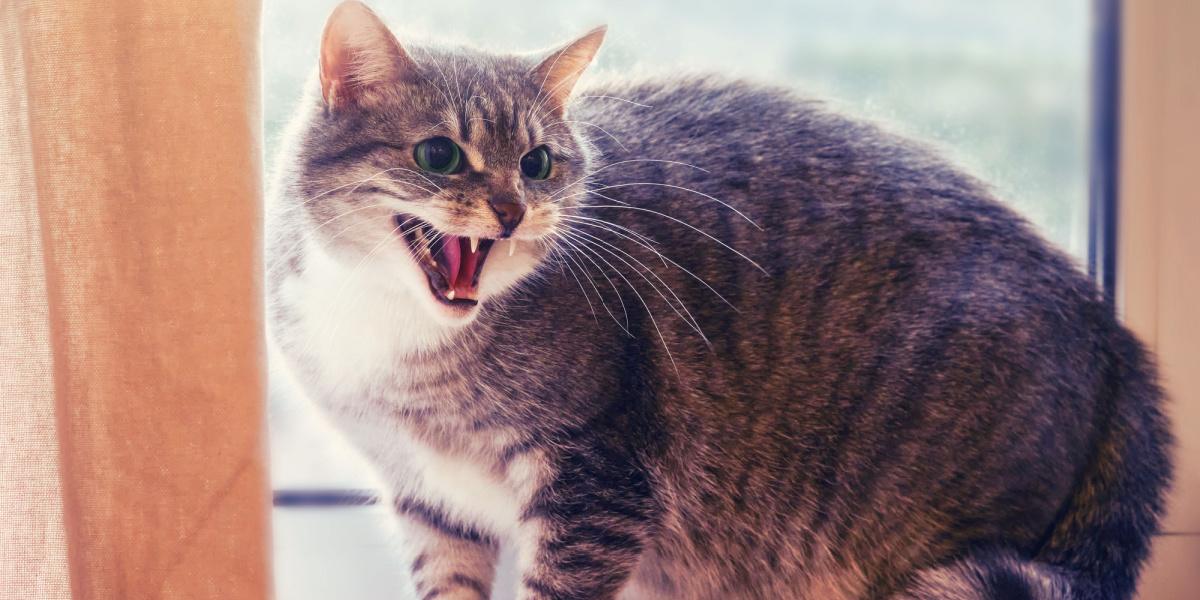
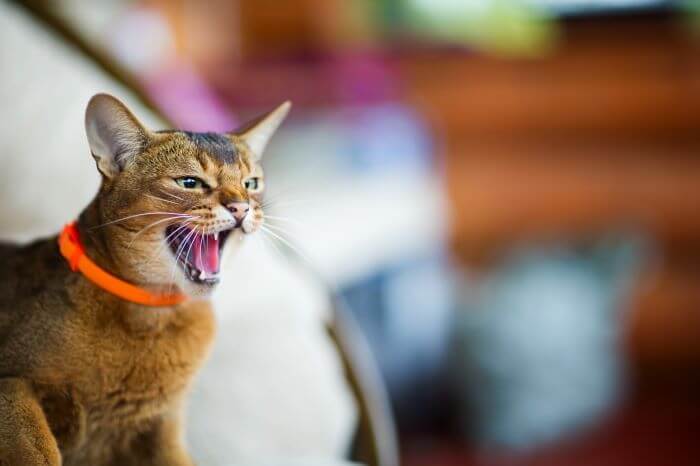
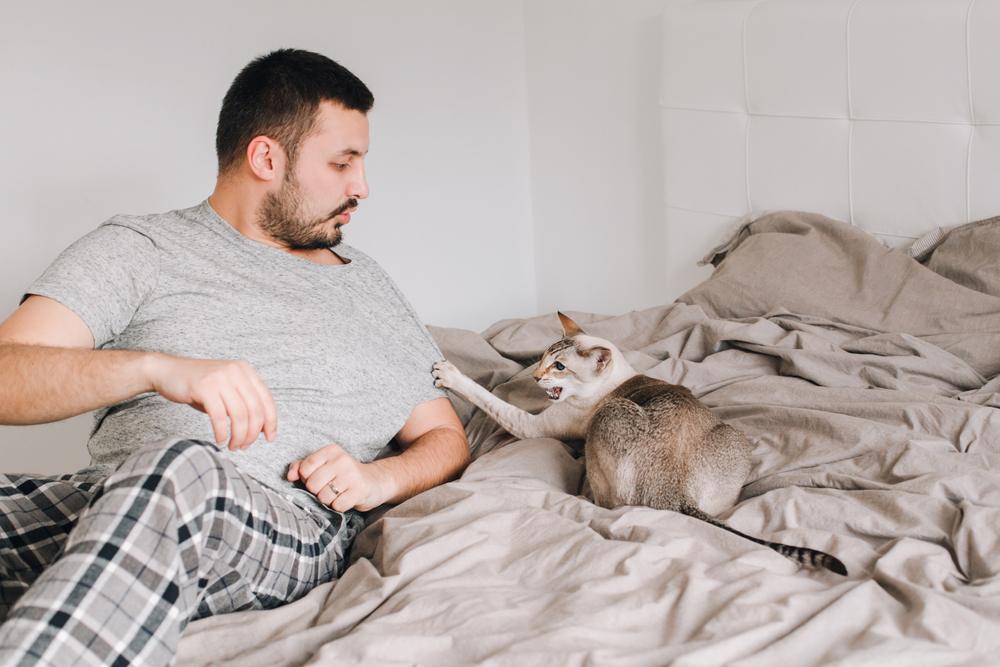
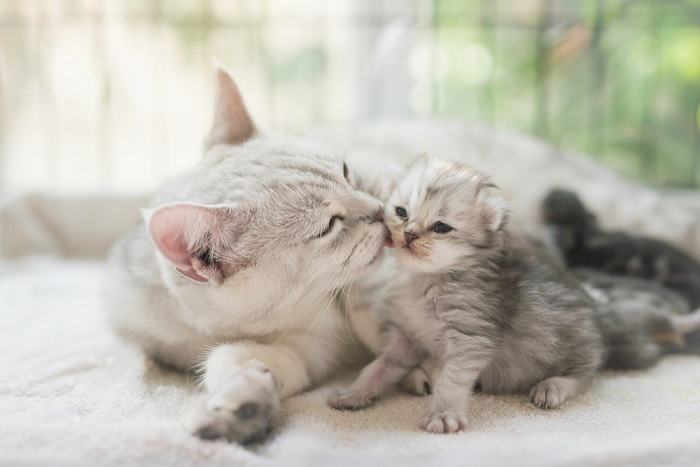

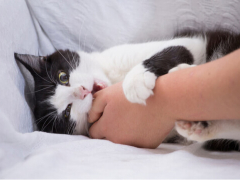





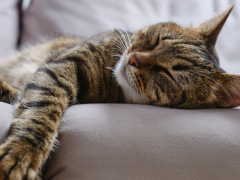
Extremely informative
Hi Sharon,
This is a great question!
You’re right it could take years for a feral cat to develop trust in humans especially if she missed on handling during the socialization period or has been mistreated by humans.
Certain feral cats do come out of their shell with clicker & target training (use a long retractable telescopic rod) once you find what’s their motivator (i.e. food or toys), these are great tools to use once she builds more confidence and feels safe to come out of hiding.
Meanwhile you can add extra hiding spots like boxes, tunnels, shoe-boxes plus paper-bags, you can place a box in each room of the house even the bathroom as a retrieval spot if/when she becomes spooked.
Furthermore you can set a treasure hunt to encourage exploration of the house by scattering treats or using puzzle feeders particularly night-time when it’s quiet and she feels safe to come out of hiding to acclimatize her to the unfamiliar environment.
If you have the option to create an enclosed outdoor space or built a Catio for her to get more acclimated to being indoors with the outdoor feel, that’s an extra bonus.
Remember to be patient, let her initiate interaction and when she does come out of hiding greet her from a distance with a slow blink. When you blink slowly, divert your gaze to another side to prevent seeming threatening.
Keep in mind that several things would frighten a former feral so try to avoid sudden movements, loud noises and strangers coming regularly to the house.
Lastly, if she chooses not to interact, we must respect her wishes and not force the interaction. A cat that is provided free choice is usually more likely to intermingle with you in the future since it feels a sense of control. Control is incredibly important for cats as species!
Hope this clicker/target training video helps as a guide (https://www.youtube.com/watch?v=1BTpYqb-P7g)
Keep us posted
Melina
Great information. What do you recommend regarding our beautiful feral cat who is aggressive, hisses, swats. We took her in and have given her a safe and comfortable indoor home. She has lived with us since February, 2021. We rarely see her and can’t approach her at all. She has been to a vet and is in good health. She was feral for about 4-5 yrs and didn’t seem to like interacting with the other feral cats. Very independent. She adopted our daughter who fed her for five years. She has never let anyone touch her although she greets our daughter and rubs against her legs. This took many years to develop. What can we do to help her become less aggressive and more loving? We love her and want to have a better relationship with her.
Hello Melina— I have a two year-old orange tabby Manx named Henry. He is a great cat! Friendly, loving, playful and loyal are all words that describe him. He does like to play rough though. When he starts biting, I will usually start ignoring him. The behavior that is most worrisome to me is his “ambush biting.” This doesn’t happen too frequently. But when it does, I find it difficult not to react. Henry This happened last evening when I was preparing his food. As I carried it from the kitchen to his “room”. Out of nowhere, he ran up to my legs, bit me HARD, hissed and retreated. When he does this it is almost always a hard enough bite to draw blood. The bite is always accompanied by a hiss. Further, this is the only time he hisses. These episodes are not always around food time either. From my studies online, I have approached the situation all wrong. I have yelled, sprayed him with water, and even popped him on the butt (not hard). It HURTS when he does it! What are your thoughts? Why is he doing this? How should I handle it? I’d like to eradicate this behavior if at all possible. I did ignore him afterwards last night. He came around to his food a few minutes later. Then he came to where I was. I noticed that his eyes were very dilated. I spoke softly and attempted to calm him. It worked. A few minutes later, he was asleep on the pillow beside me. But my shin was still bleeding. Lol! I love him. So this is not a deal breaker for me. But I just want to make sure that I don’t reinforce this behavior. Thanks!
Hi Joe,
Thank you for your great question, sorry to hear about the blood draw.
Ambush biting can be caused by under-stimulation (i.e. boredom, insufficient play), inappropriate play/predation or even over-stimulation (i.e. too much petting, brushing). Unfortunately I don’t have sufficient information to assess your particular case, so I can only recommend engaging a feline behaviorist to assess Henry.
In the future, watch for subtle changes in his body language to predict an imminent attack and try as hard as possible to remain still and non-responsive. You’re doing the right thing by letting him calm down, not punishing him and talking softly to reduce his over-arousal. Meanwhile, keep a detailed record of the incidents plus video footage to help the behaviorist establish the underlying motivation.
Sorry, if it’s not much help
Melina
Our 2+ male Siamese is really aggressive at nighttime when he attacks our feet scratching so hard he draws blood. He isn’t mad I believe he just wants to play. We have to put him out of bedroom and then he meows at the door for a long time. What can we do to get him back to where he once was sleeping alongside us thru out the night? Thanks
Hi Judy,
Thank you for your question
You Siamese male is fairly young, being crepuscular in nature he may be exhibiting play aggression/predation behavior due to under stimulation or lack of appropriate or sufficient play opportunities daytime.
You’ll need to provide interactive play at least twice daily with various cat toys (https://cats.com/best-cat-toys). Moreover engage him in an evening play session before bedtime, be mindful not to overstimulate him. Lastly, you can also introduce agility along with clicker training to curve his energy and provide him with further mental & physical stimulation.
My concern is the intensity and blood draw so I would recommend consulting a cat behaviorist if none of my recommendations work.
Hope this helps
Melina
My question is I have two cat’s that are Sister’s they were adopted at a very young age but now that they are over 2 year’s they hate each other was gradual at first thinking one wasn’t getting enough loving or attention from my grandson but that wasn’t the case now one is always wanting to fight the other and unfortunately they do end up in a real cat fight what can I do or should I place one into another home where there is no other cat’s
Hi Carol,
Thank you for your question
This is fairly typical of cats who have reached social maturity (generally between 2-4 yrs of age), they don’t hate each other, they are experiencing conflict.
Initial treatment for conflict involves modifying the environment to ensure each cat has separate resources (bedding, scratching posts, cardbord boxes, food & water bowls, litter trays) distributed throughout the house. Adding three-dimensional spaces (condos, playgrounds, trees) may also be helpful plus providing access to the outdoors (harness & leash walks, pram, catio) will also be of great benefit.
Let’s not rush placing one of them into another home till you modify your environment since it’s a very stressful experience moving home to a cat and there’s no guarantee that another household will be a better option.
Once things are under control, consult your vet or a cat behaviorist for further assistance.
Hope this helps
Melina
Everything that you have said to try has already been done separate sleeping quarters, eating, towers, scratching posts but I have one who will intrude into the other ones space just to fight, I mean she will go looking for her sister just to fight and the one that is getting whooped was a very loving cat that would want to snuggle with you but since her sister has been attacking her she hides for long periods of time
Thank you for trying your best Carol. If you feel that you have tried everything, it’s worth consulting your vet or a cat behaviorist who can make further recommendations after meeting you all in person.
Here’s a link to help you find an Animal Behavior Consultant in your area: https://m.iaabc.org/consultant/
Best of luck
Melina
Why does my cat viciously attack me when I tell her no? She will never quit but just becomes more aggressive.
Hi Cecile,
Thank you for your question and apologies your cat attacks you.
There could be an element of frustration since your cat isn’t able to gain what he/she wants. Take the time to understand what your cat is seeking and why they are constantly seeking it to ensure you can either provide that or redirect them before the behavior occurs.
Please seek qualified veterinary or animal behavior advice if you’re unable to resolve it yourself prior to aggression escalation.
Hope this helps
Melina
Hi Melina,
Sure hope you can help!
I’ve had my cat for 5 yrs and she’s about 6. She was a stray for the better part of her being a kitten. I adopted her from a shelter and they told me that “she preferred” to not be with other cats. That was find since there wouldn’t be any other cats in the home. For the 1st 4 yrs we lived on the 2nd floor and “nothing happened” until we moved to a ground floor apt and that’s when the flare up of really bad aggressive behavior started. Every time, yes every time she sees a cat in the yard she get very aggressive, growls, hisses, jumps at the window and has even turned on me when I try to get her mind “off of it”.
The latest episode was last night and it was the worst. Usually it takes her about 20 mins to calm down but last night it took over 1 hr ! She was in one room and I was in another room just to give her “some space” so she wouldn’t feel threated by me. I tried a several occasions to leave my room but she would growl and her ears were WAY back like I’ve never see her before. So after 1+ hour I finally came out of my room to go to another room “ignoring” her basically and then she came to me in the other room that I had gone into. She was somewhat “ok” after that but I didn’t really feel safe so I waited patiently several hours before going to bed, just in case she would react again.
I sure hope you can help. I’ve reached out to get some help, some didn’t reply and others said “keep the curtains closed”.
Thank you for any help you can give me. My precious little girl is a real delight and very smart otherwise, but when she sees another cat on the property she completely losses it.
Hi Carole
Thank you for touching base and sorry to hear you had little help with the current situation.
My recommendation would include a thorough health check at the vet since pain/illness can increase anxiety and her vulnerability. Meanwhile, please plug in a Feliway Diffuser in the room she spends most of her time. Moreover is there any way to find the route the invader is using and block access where possible. I would also block indoor visibility with either opaque/frosted film or carpet runners along the windowsills and door to minimize frustration and distress.
Motion detected sensors and sprinklers repellents are also a good idea, however requires all owner’s permission.
Lastly, is there anyway, you can find out who owns the cat that keeps visiting your yard and ask the owner to keep the cat confined to their yard?
Hope some of the above suggestions are of benefit, wishing you all the best!
Warm regards,
Melina
Hi Melina,
Thank you so much for your detailed reply. I really appreciate everything you’ve done to help my precious little girl.
I’ll look into the things you suggested except for trying to find out “how’s cat(s)” it/they belong to. There are several cats marking their territory that come by this house so I have no idea which one(s) came by that night my cat reacted so strongly. I really think that there’s a connection with the outside cat(s) marking their territory right under our window.
I will be purchasing a Feliway diffuser and thank you for the reminder, I have used these in the past and they really helped my precious cat I had at that time.
Again, thank you for your help!
Warm regards, Carole
Sister and brother 5 yrs old use to sleep together and chase until a year ago. Female hates brother now. She hisses and growls at him just being in same room. When he comes in a room where she can see him, hissing begins. They eat a different times, go outside most of day. Tonight she was walking down hallway and growling at nothing! Brother was in another room. She is healthy and get loving at night next to me in bed. He use to be on bed also but swatting and hissing stopped this and he waits till she’s asleep before coming on bed at very end. He has cystitis and she isn’t helping! In house they simply ignore each other. If he is laying on floor and she passes him, the growl and hiss as she passes. I am fed up with her behavior towards my male cat. He has gone thru blocking and nearly died. Now has a sister that can’t stand him. She wants to be only one in house but that’s not happening. I am going to put her on gabapentin for awhile indoors only but doubt it will change behavior. She is very loving with my son and sits on his lap not mine. I give up!
Hi Karen,
I’m so sorry your male cat has cystitis and nearly died.
It’s common for related cats to display aggression towards each other when they reach social maturity (between 2-4 years of age). When it happens it’s vital to ensure there’s sufficient private areas and secure escape routes for each cat. This helps them avoid conflict and hopefully become more tolerant of each other’s presence. Environmental modification including supplementation can assist make life a little less stressful overall.
Gabapentin can also help reduce her anxiety level if it’s been recommended by your vet. Please keep in mind it doesn’t address underlying causes of anxiety or stress, so consider having a consultation with a behavioral vet and please don’t give up.
Thinking of you all
Melina
I have 3 female cats who all came from an animal shelter as kittens. Two of them are about 14 (a Tabby & a mostly Maine Coon. and the third is 5 (a Siamese Tabby). The Siamese has suddenly started attacking her sisters for no reason. Could it be because the other 2 are getting older?
Hi Terri
There could be one of several things or a combination of reasons. Can I please check – did you take the senior girls to the vet/groomers recently or was there a separation period between the older ones and the Siamese? Non-recognition aggression can occur due to change of scent (returning cats may be perceived as a threat).
The second reason, perhaps the senior girls are developing a health condition that’s changed their smell, a vet visit will be able to rule this out.
Third one, are there any new cats in your area causing territorial frustration? the Siamese may be redirecting aggression onto the sisters since it can’t chase away the cat outside.
Lastly, perhaps the behavioral change is indicative of pain or illness. I recommend taking the Siamese to the vet for a thorough examination and separating the senior girls for a brief time till you start the re-introduction process.
Hope this helps
Melina
Recently my cat meows at me to follow her or sits and stares at me until I do but when we get to wherever she takes me, she angrily meows and swats at me if I try to talk to her or pet her. Normally she would purr and want pet, so I think she is trying to tell me something only I can’t figure out what.
Hi Misty,
Thank you for reaching out.
I’m unsure about your cat’s age or health status. Agree – she is trying to communicate that something isn’t right. It could be related to the indoor or outdoor environment or something affecting her health and well-being. If there have been no environmental changes, observe her for the next week and contact your vet health care for advice.
I hope it helps a little
All the best,
Melina
Hi Melina!
We have a kitten who’s just turned one. Just about ever since we got him, he’s been agressive to our other three cats and to my husband and I. He literally leaps on the back of one of the cats (my poor tortie girl!) and I have to literally pull him off of her.
What can we do to get rid of this behavior? He’s a SWEET guy but … man … we’re sick of getting scratched and bitten. I will admit that we’re partially to blame, in that when we got him he seemed to enjoy hand play and I guess it encouraged him to think the behavior normal.
Please help!
Lara Carter
Hi Laura,
Thank you for reading our article.
I am sorry to hear your young cat has been aggressive towards your family and other cats.
Give the following a go:
1. Use your voice to a sharp ‘ouch’ or squeal or yelp in pain.
2. Don’t pull your hand away when he bites you; instead, push or tap him gently on the shoulder, which will cause the release of your body part.
3. Avoid stroking or picking him during or after playtime.
4. Introduce clicker training. Cues like ‘Stay” and Activities such as ‘Stationing’ or ‘Go to Mat’ https://www.youtube.com/watch?v=Zz-7aqN2kKE will turn the focus away from you or the other cats.
3. Provide puzzle feeders, activity centers and increase playtime to keep him occupied from pouncing on everyone.
If none works, please consult a vet or cat behaviorist in your area.
I hope this helps.
Melina